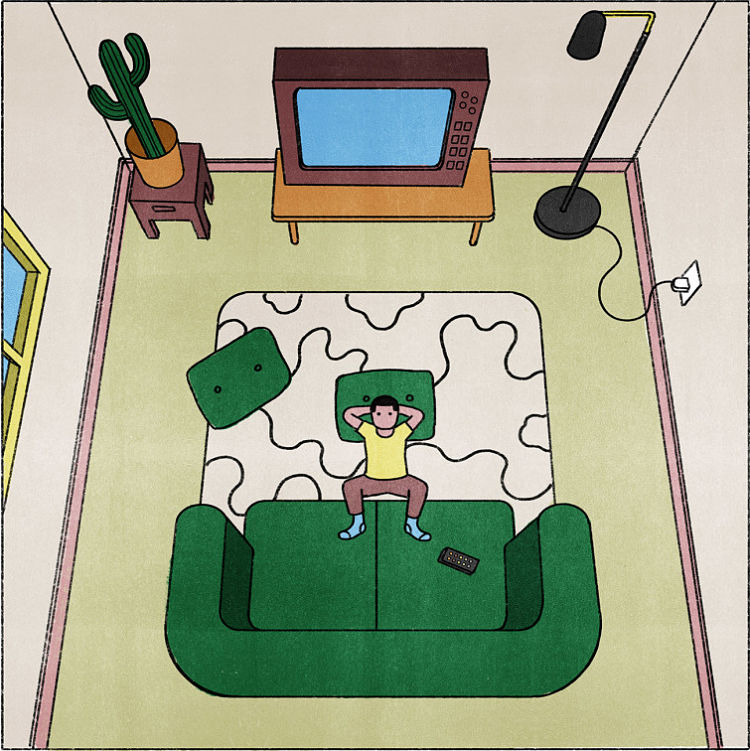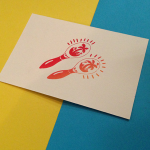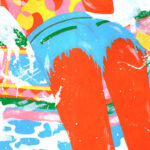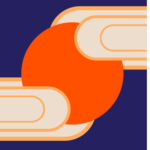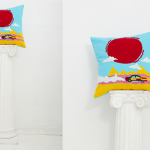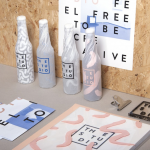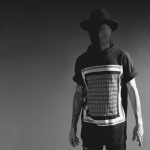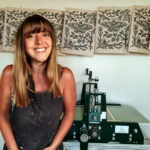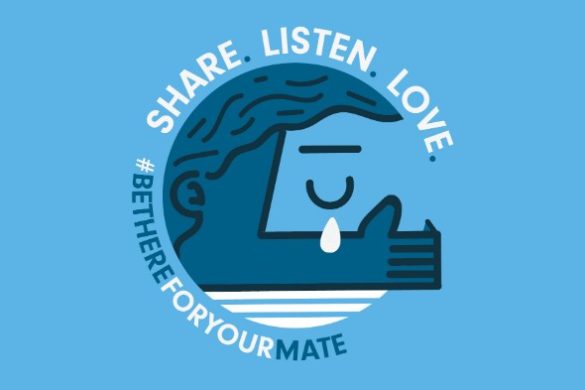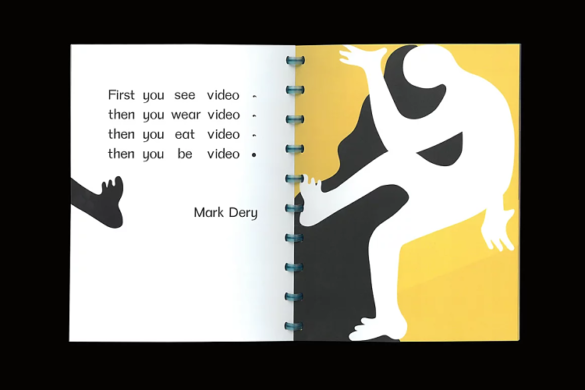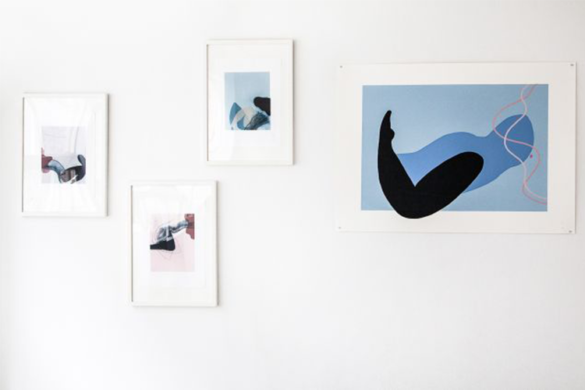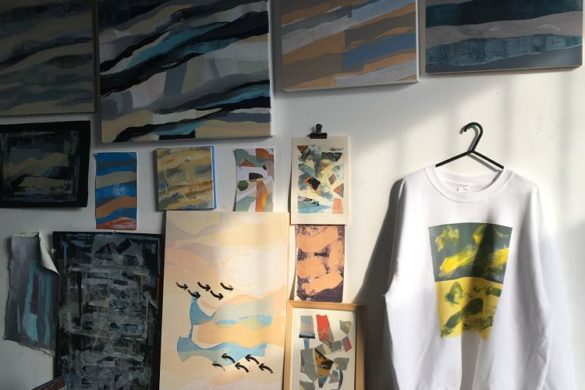Klaus Kremmerz is (or was, pre 2020) a nomadic kind of illustrator. Working mostly using his iPad or Wacom, he’s taken advantage of the fact he doesn’t really need to carry around too much to make his office anywhere. While he’s currently based in Italy, according to his agency, Dutch Uncle, his lifetime ambition is “to be invited by Elon Musk as the first illustrator to draw on Mars.”
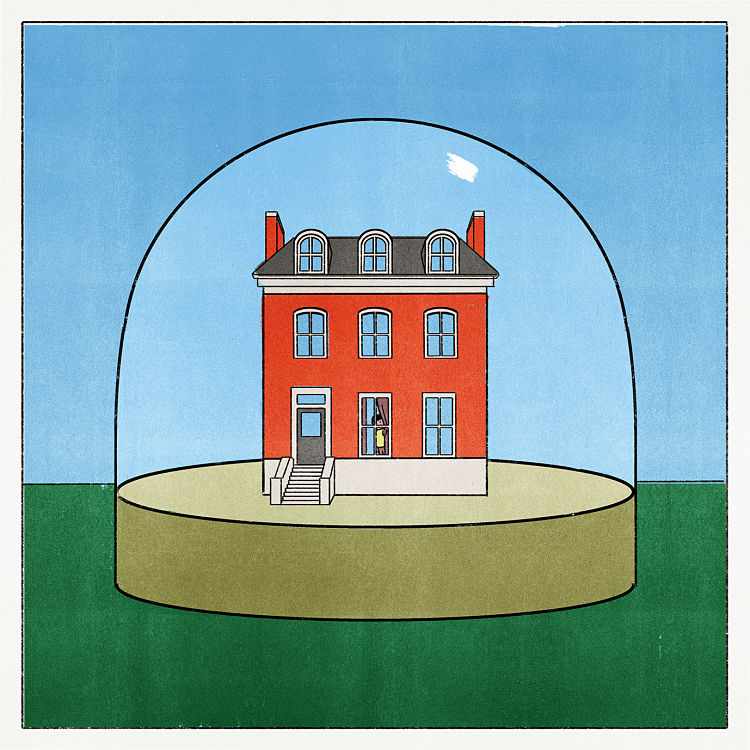
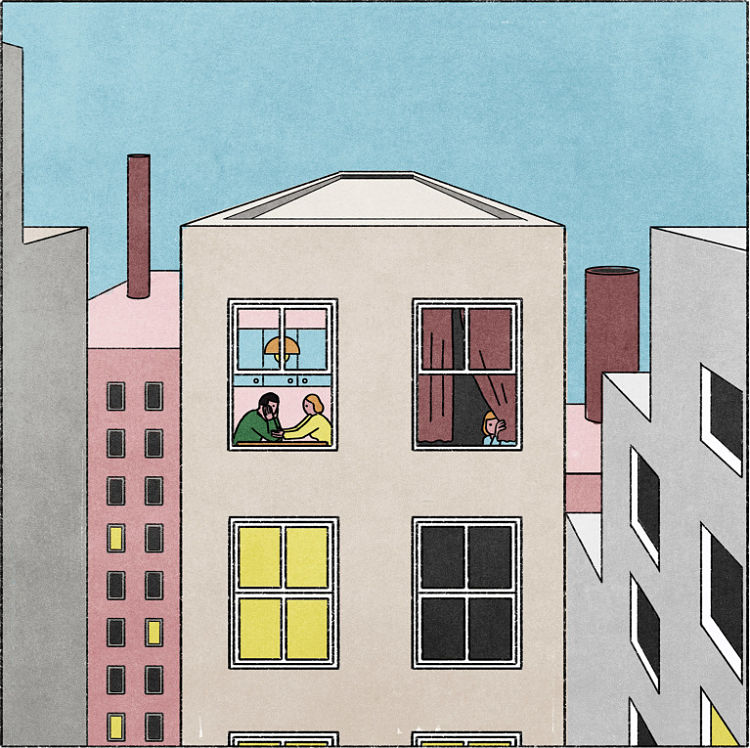 The self-taught illustrator’s process has certainly evolved over the years, even if his characteristic smart use of bright colours, simple forms, nose- and mouth-less faces, and thoughtful shadowing has remained constant.
The self-taught illustrator’s process has certainly evolved over the years, even if his characteristic smart use of bright colours, simple forms, nose- and mouth-less faces, and thoughtful shadowing has remained constant.
Around 2016, he was still creating all his work using felt-tip pens. “I loved that technique,” he says, but it became “too slow” as he began picking up projects with tighter deadlines. His felt-tip works would take a day or two just to colour a single image.
“Moreover it is complex to harmonise from a tone-hue point of view,” he adds. “In short, making an image with felt-tip pens took too much time. In any case, it’s not goodbye: I would like to go back to making something with felt-tip pens, but only for ad hoc projects.”
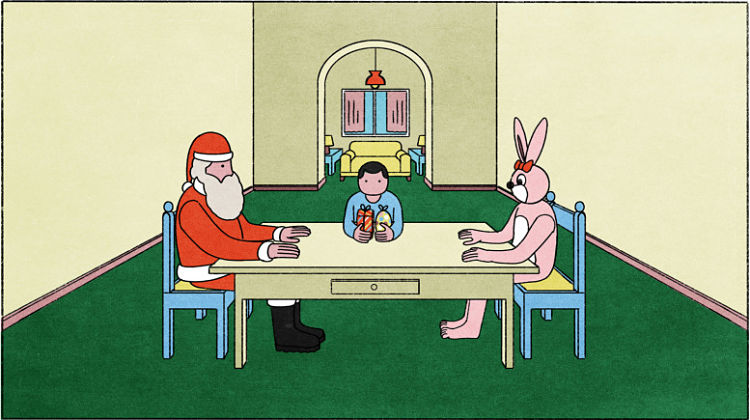
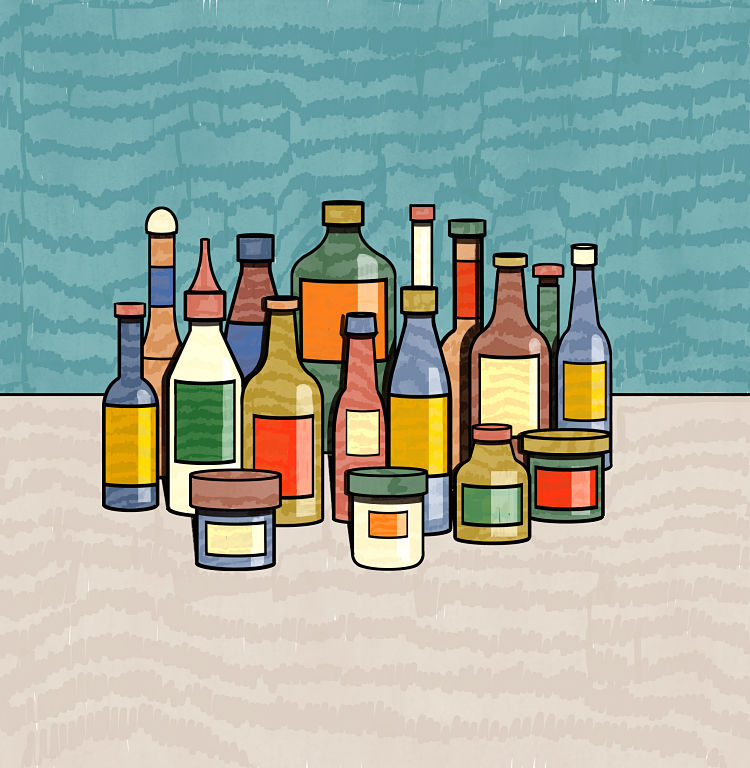
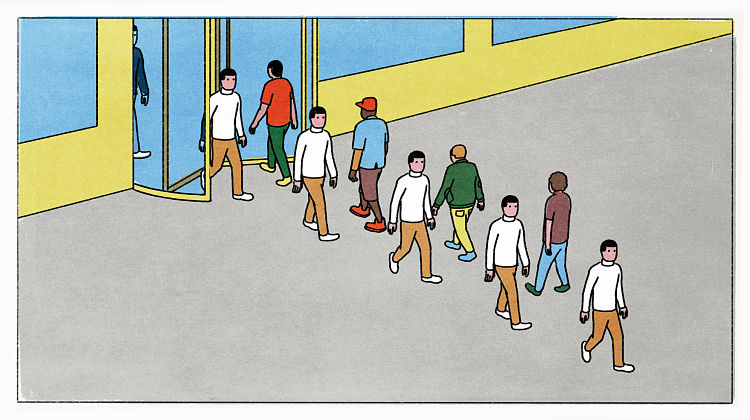 Now that he’s moved into computer-based processes (namely the markers in Photoshop), Kremmerz says that he’s not wedded to either side of the analogue/digital coin. “For me, they remain two somewhat different things,” he says. Now, hand-created images are reserved for personal projects that don’t carry the pressure of paid commissions. “I like to think that manual work is more suited to my artistic expression, and digital work more suited to my professional work,” he says.
Now that he’s moved into computer-based processes (namely the markers in Photoshop), Kremmerz says that he’s not wedded to either side of the analogue/digital coin. “For me, they remain two somewhat different things,” he says. Now, hand-created images are reserved for personal projects that don’t carry the pressure of paid commissions. “I like to think that manual work is more suited to my artistic expression, and digital work more suited to my professional work,” he says.
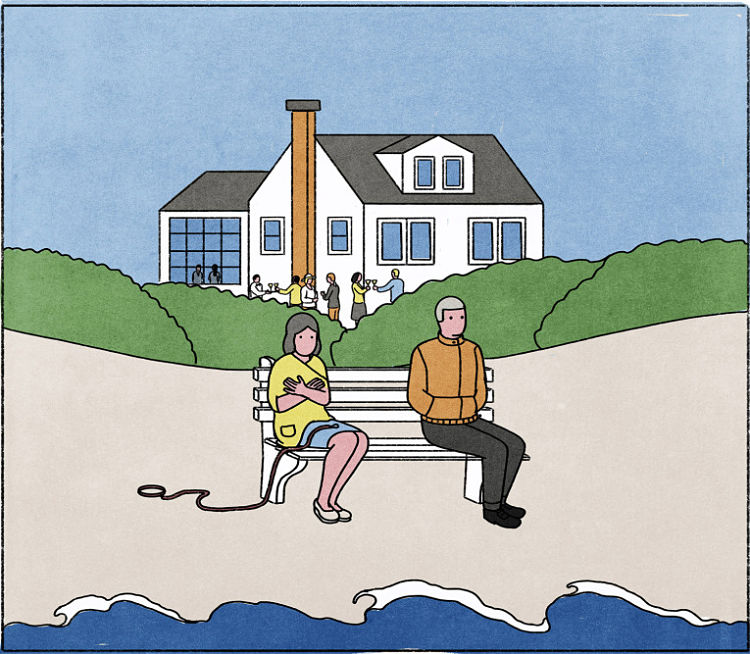 However, he finds balancing personal and commercial work tricky. “Fortunately, during my career I’ve always had a lot of work, and after that I struggle to find the creative resources to develop a personal project. Every now and then I try, but then a series of projects come along that fill up my schedule, and then my private life eats up the rest of my time.” But as he points out, he’s still young, and if he gets an urge to work on a particular project he reckons sooner or later he’ll carve out more time for personal projects too.
However, he finds balancing personal and commercial work tricky. “Fortunately, during my career I’ve always had a lot of work, and after that I struggle to find the creative resources to develop a personal project. Every now and then I try, but then a series of projects come along that fill up my schedule, and then my private life eats up the rest of my time.” But as he points out, he’s still young, and if he gets an urge to work on a particular project he reckons sooner or later he’ll carve out more time for personal projects too.
Kremmerz’s client list is impressive, and varied: he’s worked with The New Yorker, The New York Times, Apple, Credit Suisse, Die Zeit, Esquire, The Village Voice, Savannah Music Festival , Stanford University and WeTansfer, to name just a few. The commissions he most enjoys are the editorial pieces that he finds to be interesting articles in their own right: “the more something interests me, the more I like the idea of illustrating it,” he says. “That applies to every type of project from editorial for a magazine, to a book cover, to a poster or an animation.” In broader terms, he’d rather work on newspaper and magazine commissions that start and end within a week, that projectects that end up dragging on for months.
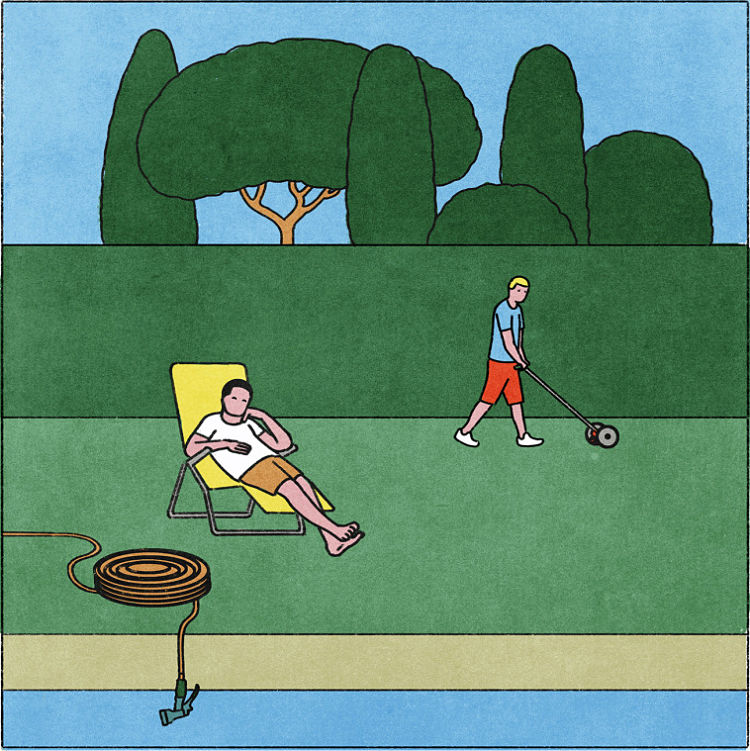
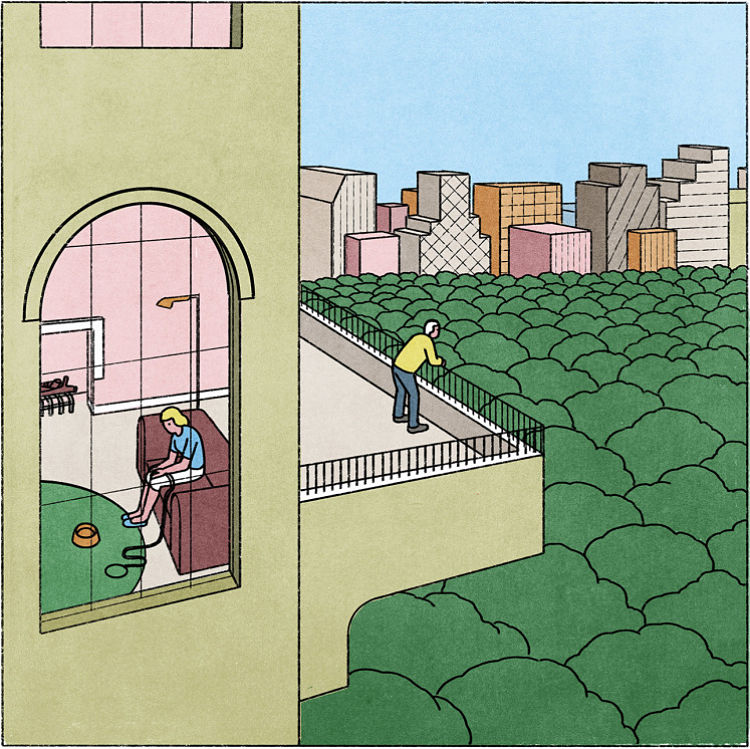 If anyone’s reading who commissions illustration work, Kremmerz has some advice for brief-setting: “It’s great if it’s clear,” he says, advising concise, straight-to-the-point instructions, bullet points, and examples of images to demonstrate the mood they’re looking for. A summary of the piece that needs illustrating is also very helpful: “It’s harder to work on a five-page article without a summary, but I understand it’s more a problem of time than goodwill.” Trust and understanding on the side of the art director is also crucial: “if this trust is lacking, it means that dozens of sketches will be needed before you get to the colour phase,” says Kremmerz. “Art directors know how to give you suggestions that improve the image…they know how to see your work with a different eye.”
If anyone’s reading who commissions illustration work, Kremmerz has some advice for brief-setting: “It’s great if it’s clear,” he says, advising concise, straight-to-the-point instructions, bullet points, and examples of images to demonstrate the mood they’re looking for. A summary of the piece that needs illustrating is also very helpful: “It’s harder to work on a five-page article without a summary, but I understand it’s more a problem of time than goodwill.” Trust and understanding on the side of the art director is also crucial: “if this trust is lacking, it means that dozens of sketches will be needed before you get to the colour phase,” says Kremmerz. “Art directors know how to give you suggestions that improve the image…they know how to see your work with a different eye.”
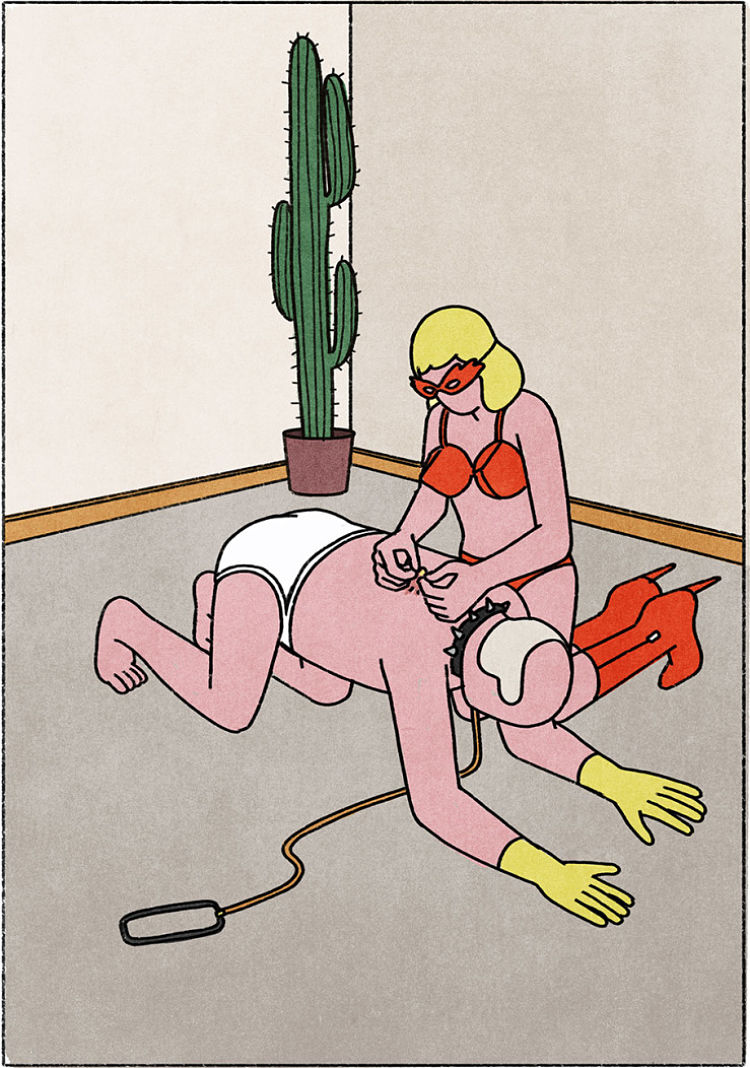 As the, er, rollercoaster of 2020 judders to a stop, Kremmerz reflects that for illustrators, maybe 90% of their work since the pandemic began have had something to do with Covid-19 since the media was so dominated by the subject. “The good thing is that people in our profession are used to being locked away working remotely. That’s what we’ve always done,” he says.
As the, er, rollercoaster of 2020 judders to a stop, Kremmerz reflects that for illustrators, maybe 90% of their work since the pandemic began have had something to do with Covid-19 since the media was so dominated by the subject. “The good thing is that people in our profession are used to being locked away working remotely. That’s what we’ve always done,” he says.
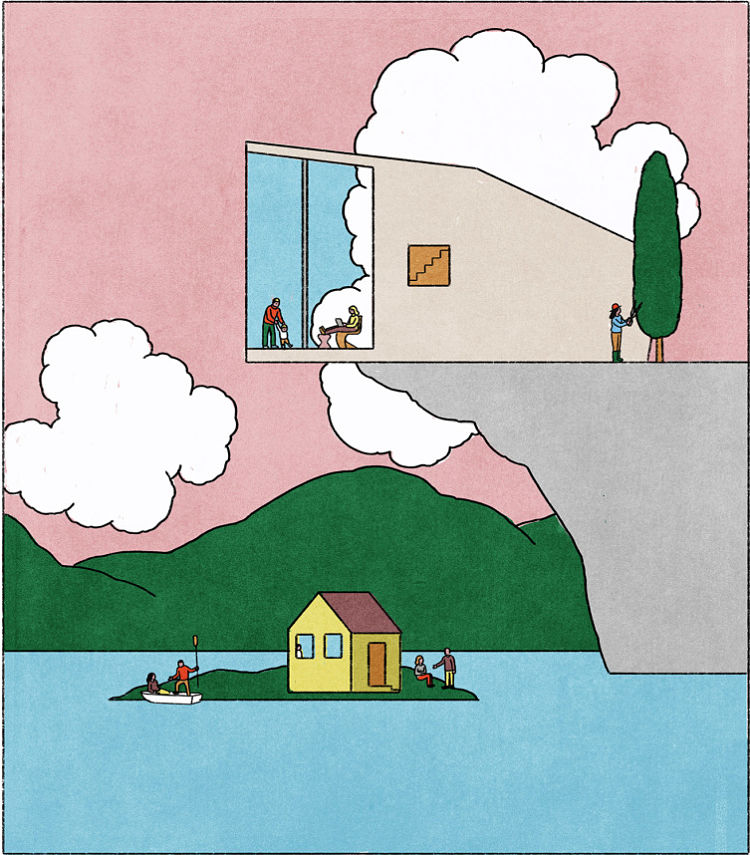 “I think the world will be very different when all this will be behind us, and I don’t mean just economically but structurally: social relations, ways of working and family relations will be deeply modified by the pandemic. It’s like the foundations of a house will be remodelled—I can’t say now if that’s for the better or worse, but being optimistic I would say for the better.”
“I think the world will be very different when all this will be behind us, and I don’t mean just economically but structurally: social relations, ways of working and family relations will be deeply modified by the pandemic. It’s like the foundations of a house will be remodelled—I can’t say now if that’s for the better or worse, but being optimistic I would say for the better.”
You might like...
- Autobahn - November 26, 2021
- Alphabetical - November 12, 2021
- SOFA Universe - November 8, 2021

